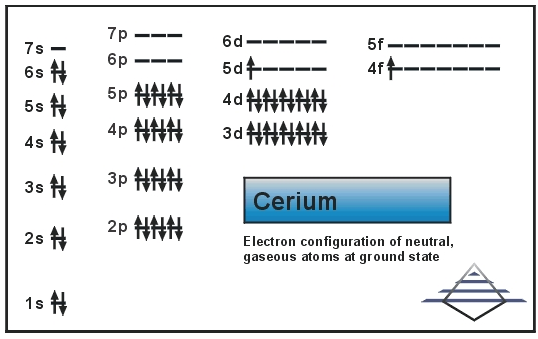Rich and diverse f-driven properties at the surface when the bulk has none
The scattering of conduction electrons in metals due to impurities with magnetic moments is known as the Kondo effect, after Jun Kondo, who analysed the phenomenon in 1964. This scattering increases the electrical resistance and has as a consequence that, in contrast to ordinary metals, the resistance reaches a minimum as the temperature is lowered and then increases as the temperature is lowered further.
The observed minimum electrical resistance in experiments with nonmagnetic metals (Au, Ag, Cu, Al, Zn, etc.) as a function of temperature is caused by the conduction electron scattering off impurity atoms with unfilled inner electron shells and spin different from zero (paramagnetic impurities). For each material, the effect is observed below a particular temperature called the Kondo temperature. Such impurity atoms can be transition series (e.g., Cr, Mn, Fe, Co) and rare-earth elements (e.g., Ce, Tm, Yb).

While most of the rare earth elements show a very stable trivalent state in solids, some of them, especially Ce, Yb, and Eu, may display different valence states depending on the chemical composition, the temperature, and the applied pressure or magnetic field. This valence instability, which is caused by the f shell being almost empty (Ce), almost full (Yb) or almost half-filled (Eu), is connected with a hybridization between localized 4f and delocalized valence states. Weak hybridization results in a stable trivalent rare earth state with large local magnetic moments, which get ordered at low temperature due to a coupling mechanism of localized f-shell electron spins in a metal by means of an interaction through the conduction electrons exchange. This is an example of so-called f-driven physics.
Rare-earth-based compounds, which are paradigmatic strongly-correlated electron systems, attract considerable attention, usually because of their exotic bulk properties. Their surfaces do not receive as much attention as their bulk, though. However, it is reasonable to anticipate that the f-driven physics at the surface can be even much richer and more compelling than in the bulk. Novel f-driven phenomena, phases and temperature scales, quite different to those in the bulk, may be the result of a lack of inversion symmetry and spin-orbit coupling (SOC), the appearance of surface-electron states and resonances or strong changes of the crystal-electric field near and at the surface.

Surfaces of quasi-2D rare-earth-based materials are especially interesting, as they contain interacting magnetically active f– and d– sublattices. Now, a team of researchers reports 1 on a comprehensive investigation of the P-Co-P-Ce surface of the quasi-2D material CeCo2P2, where Co reveals ferromagnetic order within the ab plane, which stack antiferromagnetically along the c axis with a rather high Néel temperature (TN) of 440 K. TN being the temperature above which an antiferromagnetic substance becomes paramagnetic.
The new measurements indicate the Ce sublattice is rather passive in the bulk and behaves tetravalently. However, at the P-Co-P-Ce surface, the Ce layer becomes magnetically active. This is because of the f-driven symmetry breaking, bond reduction and magnetic field resulting from the uncompensated ferromagnetic Co layer within the P-Co-P-Ce surface block, which leads to the partial occupation of the Ce 4f shell. The momentum-resolved photoemission (ARPES) results indicate a strong admixture of the Ce 4f states to the itinerant electrons bands near the Fermi level, including the spin-split bands caused by exchange interactions at the Co layer.
The temperature-dependent ARPES spectra reveal strong changes of the 4f intensity near the Fermi level, in accordance with the Kondo scenario. Thus, the Ce sublattice within the P-Co-P-Ce surface reveals a Kondo lattice behavior. The theoretical model suggests that the emerged 2D Kondo lattice couples ferromagnetically to the ordered Co lattice within this surface block.
These findings show how rich and diverse the f-driven properties at the surface of a material without f-properties in the bulk can be, and justify more detailed studies of the properties emerging at the surfaces of many strongly correlated Ce, Eu, and Yb materials with layered, quasi-2D structure.
The results also bear strong implications for how novel functional quantum materials can be devised using thin layers of f-materials as building blocks. In such systems, different combinations of fundamental interactions like SOC, exchange magnetism, heavy-fermion behaviour, unconventional superconductivity and others, originating from distinct atomic layers can be realized. Thus, combining these interactions with one another provides the opportunity to predict and create novel materials with new functionalities.
Author: César Tomé López is a science writer and the editor of Mapping Ignorance
Disclaimer: Parts of this article may have been copied verbatim or almost verbatim from the referenced research paper/s.
References
- Georg Poelchen, Igor P. Rusinov, Susanne Schulz, Monika Güttler, Max Mende, Alexander Generalov, Dmitry Yu. Usachov, Steffen Danzenbächer, Johannes Hellwig, Marius Peters, Kristin Kliemt, Yuri Kucherenko, Victor N. Antonov, Clemens Laubschat, Evgueni V. Chulkov, Arthur Ernst, Kurt Kummer, Cornelius Krellner, and Denis V. Vyalikh (2022) Interlayer Coupling of a Two-Dimensional Kondo Lattice with a Ferromagnetic Surface in the Antiferromagnet CeCo2P2 ACS Nano doi: 10.1021/acsnano.1c10705 ↩